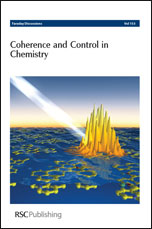Multiconfigurational Ehrenfest approach to quantum coherent dynamics in large molecular systems
Abstract
This article briefly describes recently developed Multiconfigurational Ehrenfest dynamics method to simulate quantum dynamics in systems with many degrees of freedom. The central idea is to guide the trajectories of basis wave functions by means of the Ehrenfest trajectories. The amplitudes of guided basis functions are coupled through a system of linear equations. The approach has been applied to simulations of nonadiabatic dynamics in Spin–
- This article is part of the themed collection: Coherence and Control in Chemistry

 Please wait while we load your content...
Please wait while we load your content...